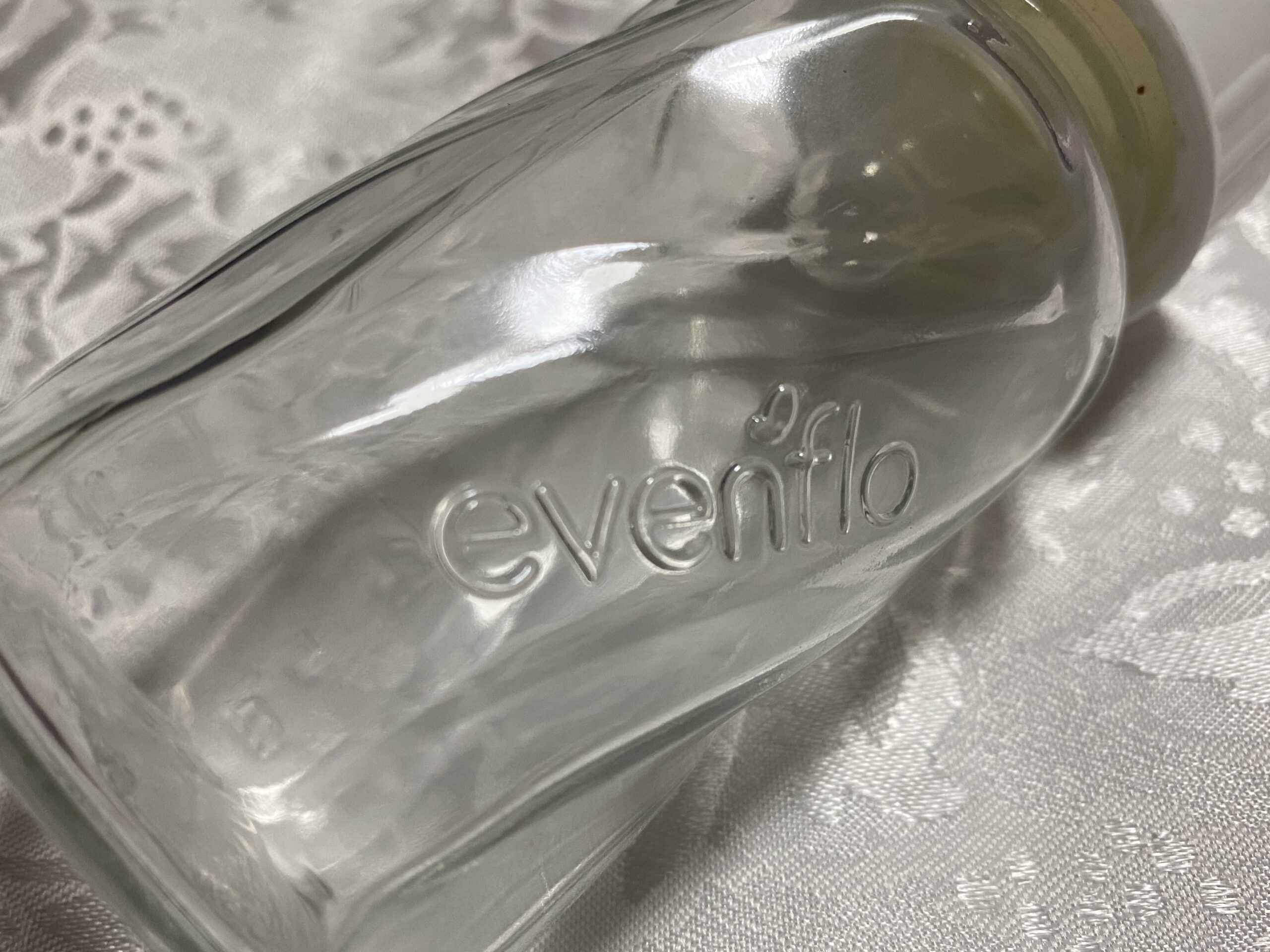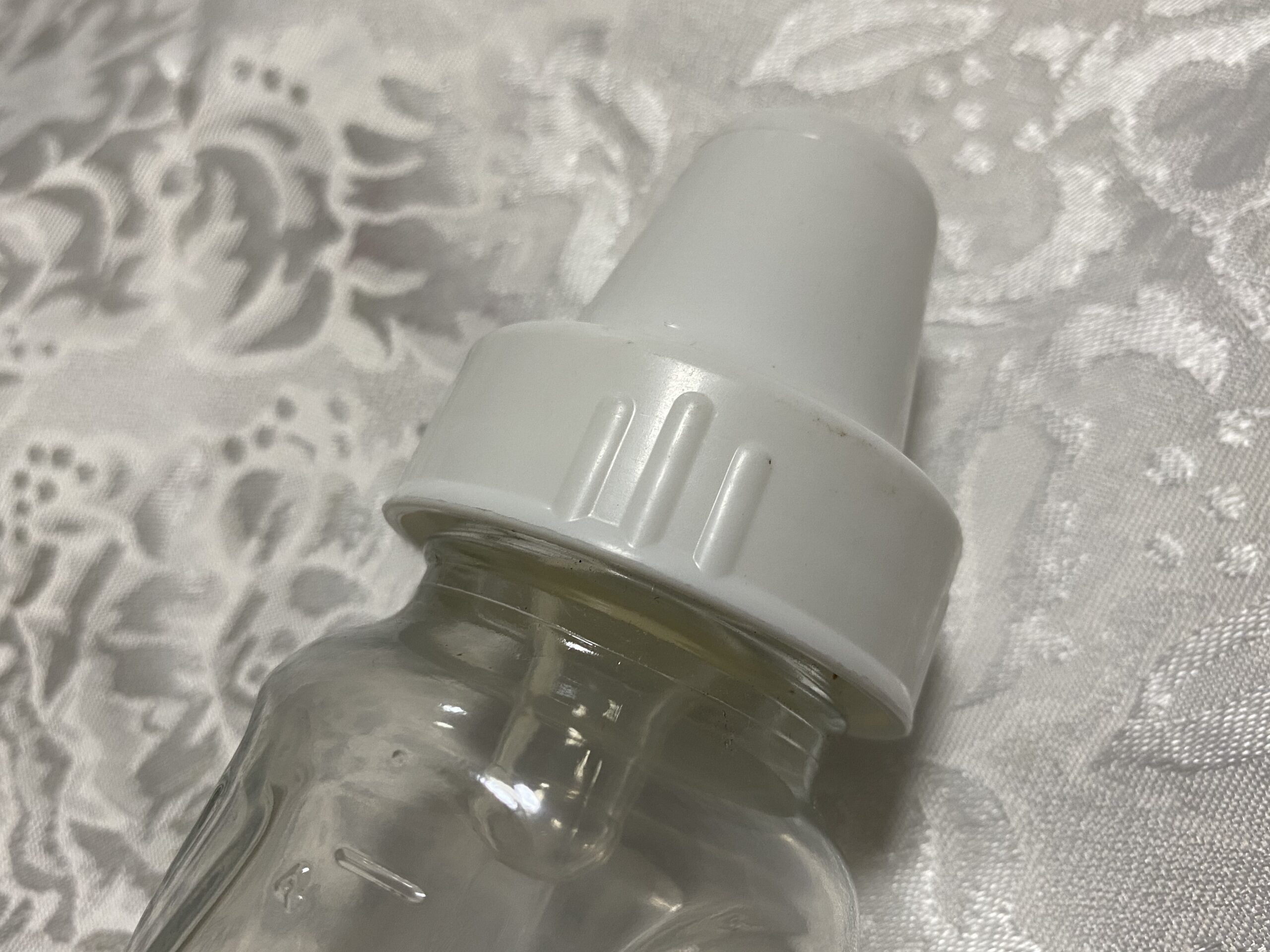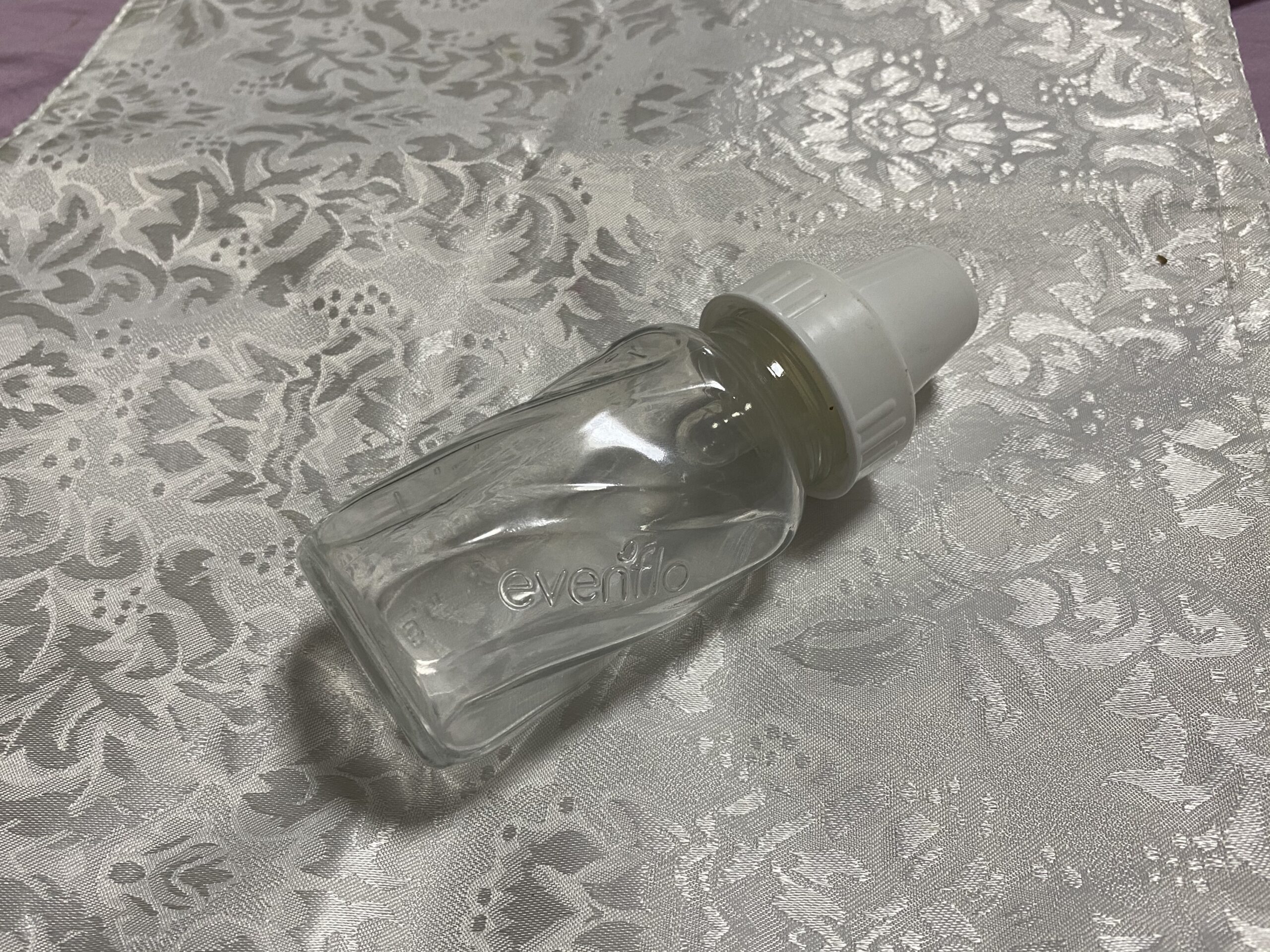4 oz clear glass evenflo baby bottle: Lead-free + 10 ppm Cadmium. Safe by all standards – full XRF test results in post
For those new to this website:
Tamara Rubin is a federal-award-winning independent advocate for consumer goods safety and a documentary filmmaker. She is also a mother of Lead-poisoned children, her sons were acutely Lead-poisoned in 2005. Since 2009 Tamara has been using XRF testing (a scientific method used by the U.S. Consumer Product Safety Commission) to test consumer goods for toxicants (specifically heavy metals), including Lead, Cadmium, Mercury, Antimony, and Arsenic. All test results reported on this website are science-based, accurate, and replicable. Items are tested multiple times, to confirm the test results for each component. Tamara’s work was featured in Consumer Reports Magazine in February of 2023.
Reading #1.) Side of the baby bottle
60-second reading
- Cadmium (Cd): 10 +/- 2 ppm
- Bromine (Br): 3 +/1 ppm
- Iron (Fe): 169 +/- 41 ppm
- Nb: 230 +/- 8 ppm
- Indium (In): 10 +/- 3 ppm
- Tin (Sn): 23 +/- 3 ppm
Reading #2.) rounded bottom edge of the baby bottle
60-second reading
- Cadmium (Cd): 3 +/- 2 ppm
- Bromine (Br): 2 +/1 ppm
- Iron (Fe): 108 +/- 37 ppm
- Tin (Sn): 9 +/- 3 ppm
Reading #3.) the white plastic cap of the baby bottle
60-second reading
- Iron (Fe): 88 +/- 11 ppm
- Copper (Cu): 14 +/- 6 ppm
- Titanium (Ti): 8,892 +/- 164 ppm
- Barium (Ba): 135 +/- 34 ppm
Some additional reading that might be of interest:
- The post discussing the testing methodology used on this website
- Post discussing how to send in an item for testing
- Things that you can test at home.
- Things that might be better tested with an XRF instrument.
- “Can I test things myself at home?”
Thanks for reading. Thank you for sharing my posts. As always, please let me know if you have any questions and I will do my best to answer them personally as soon as I have a moment (which may not be right away – but I will try)!
Tamara Rubin
#LeadSafeMama
Amazon links are affiliate links. If you purchase something after clicking on one of my links I may receive a percentage of what you spend, at no extra cost to you.
Never Miss an Important Article Again!
Join our Email List













Were the nipples tested also?
Thank you for all your hard work! It helped me tons!
Not on this particular bottle. Most of the silicone nipples test positive for trace Cadmium. Stick with natural rubber nipples whenever possible.
I have the teal blue version of these glass bottles from 2019, used for my daughter, purchased from Amazon. Did you happen to test the colored blue glass version of these bottles? If not, should I send you one? Thank you for fighting the good fight on behalf of all us moms who love our children so much and will do anything to keep them safe.
Can you please test the blue ones, I use them as well.
Thank you so much!